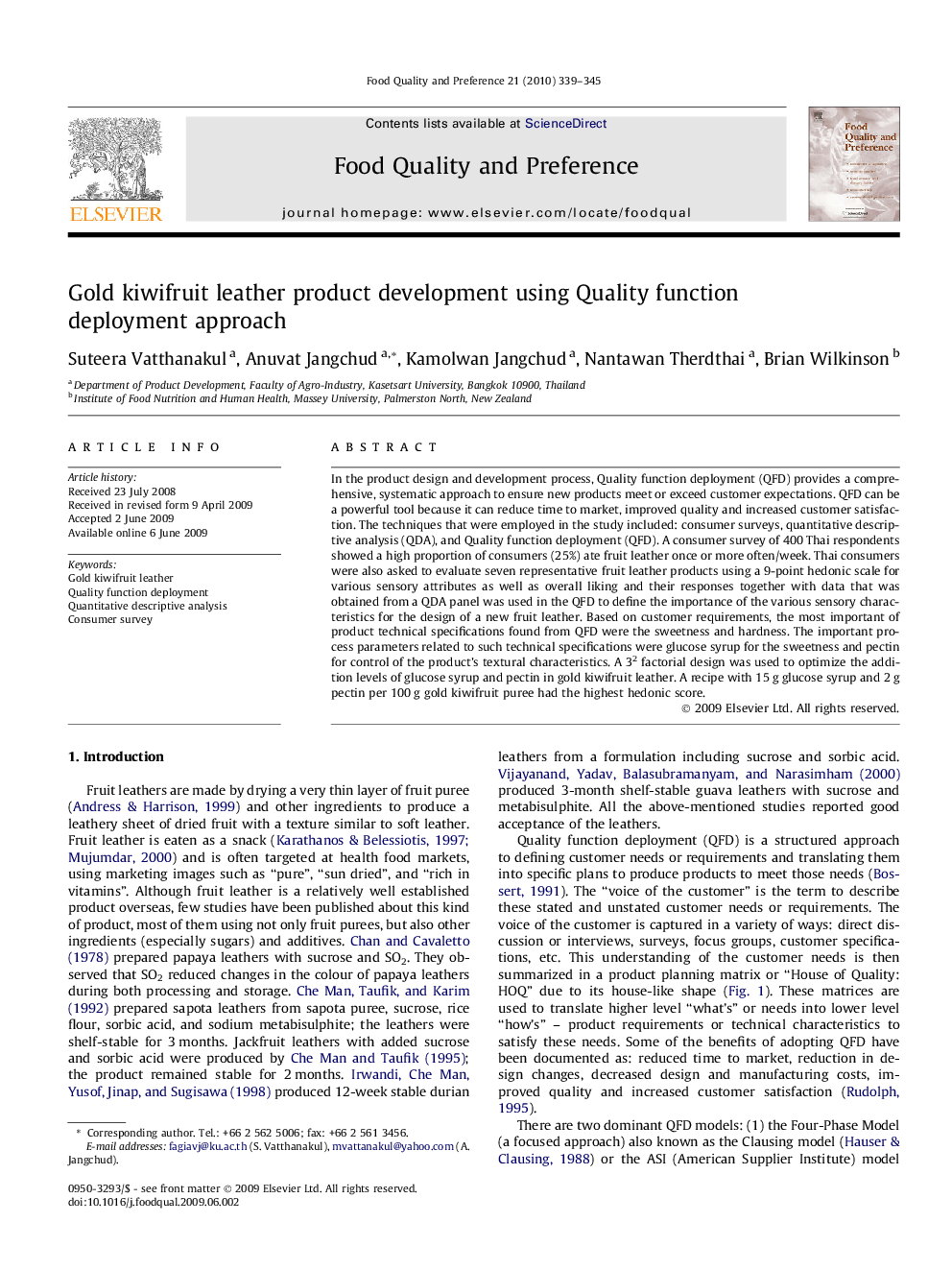| Article ID | Journal | Published Year | Pages | File Type |
|---|---|---|---|---|
| 4317626 | Food Quality and Preference | 2010 | 7 Pages |
In the product design and development process, Quality function deployment (QFD) provides a comprehensive, systematic approach to ensure new products meet or exceed customer expectations. QFD can be a powerful tool because it can reduce time to market, improved quality and increased customer satisfaction. The techniques that were employed in the study included: consumer surveys, quantitative descriptive analysis (QDA), and Quality function deployment (QFD). A consumer survey of 400 Thai respondents showed a high proportion of consumers (25%) ate fruit leather once or more often/week. Thai consumers were also asked to evaluate seven representative fruit leather products using a 9-point hedonic scale for various sensory attributes as well as overall liking and their responses together with data that was obtained from a QDA panel was used in the QFD to define the importance of the various sensory characteristics for the design of a new fruit leather. Based on customer requirements, the most important of product technical specifications found from QFD were the sweetness and hardness. The important process parameters related to such technical specifications were glucose syrup for the sweetness and pectin for control of the product’s textural characteristics. A 32 factorial design was used to optimize the addition levels of glucose syrup and pectin in gold kiwifruit leather. A recipe with 15 g glucose syrup and 2 g pectin per 100 g gold kiwifruit puree had the highest hedonic score.
